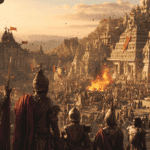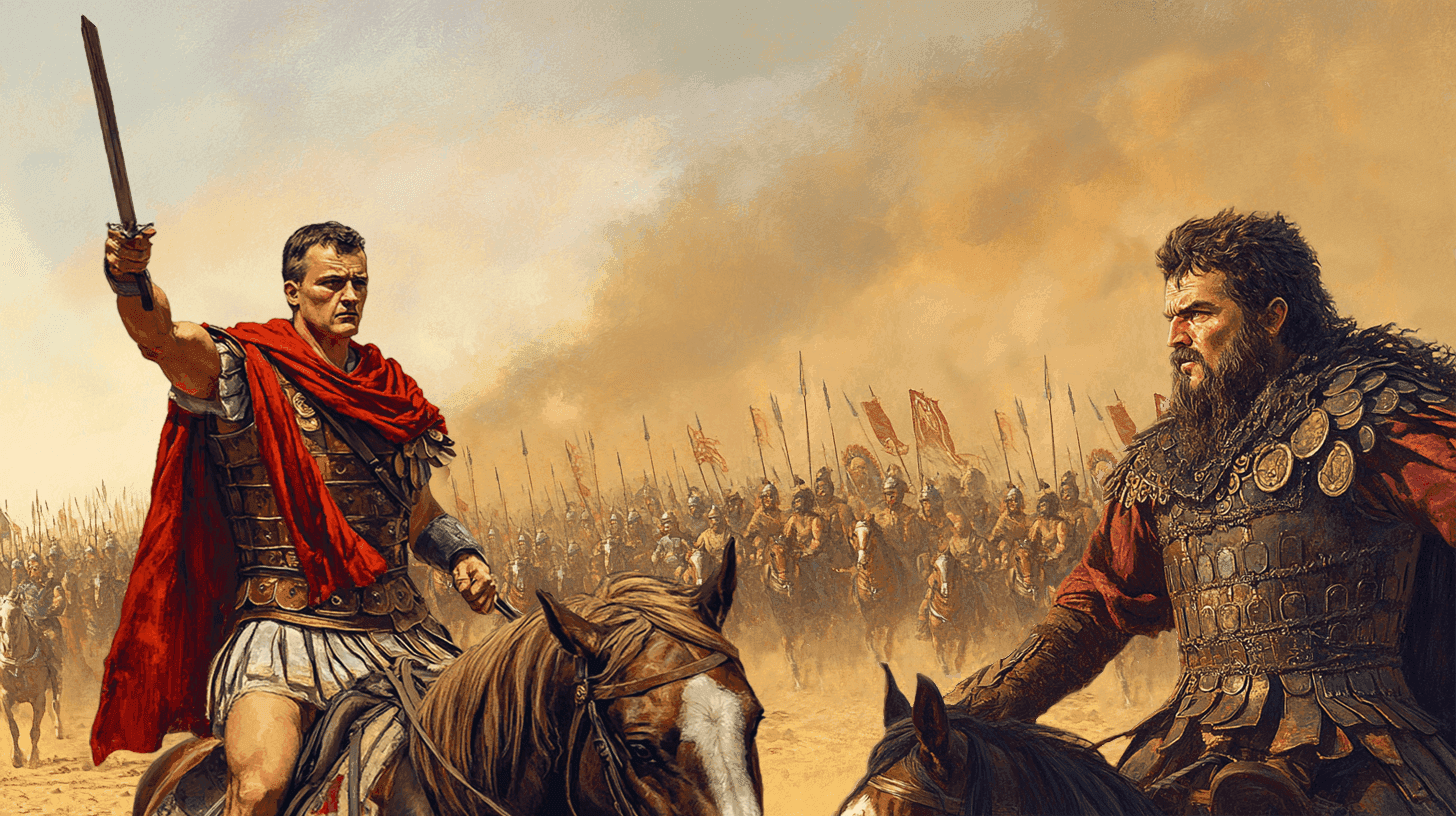
The Battle of Châlons, also known as the Battle of the Catalaunian Plains, stands as one of the most significant military engagements in European history. Fought in 451 CE, this clash between the forces of the Western Roman Empire, led by General Flavius Aetius, and the Hunnic Empire under the infamous Attila the Hun, would have far-reaching consequences for the future of Europe and Western civilization.
The Rise of Attila
In the mid-5th century CE, the Western Roman Empire was in decline, beset by internal strife and external threats. Among these threats, none loomed larger than Attila the Hun. Having united the nomadic Hun tribes under his leadership, Attila had built a huge empire stretching from the Caspian Sea to the Rhine River.
Attila’s reputation for brutality and military prowess struck fear into the hearts of Romans and barbarians alike. His armies seemed unstoppable, having already devastated much of Eastern Europe and extorted massive tributes from the Eastern Roman Empire.
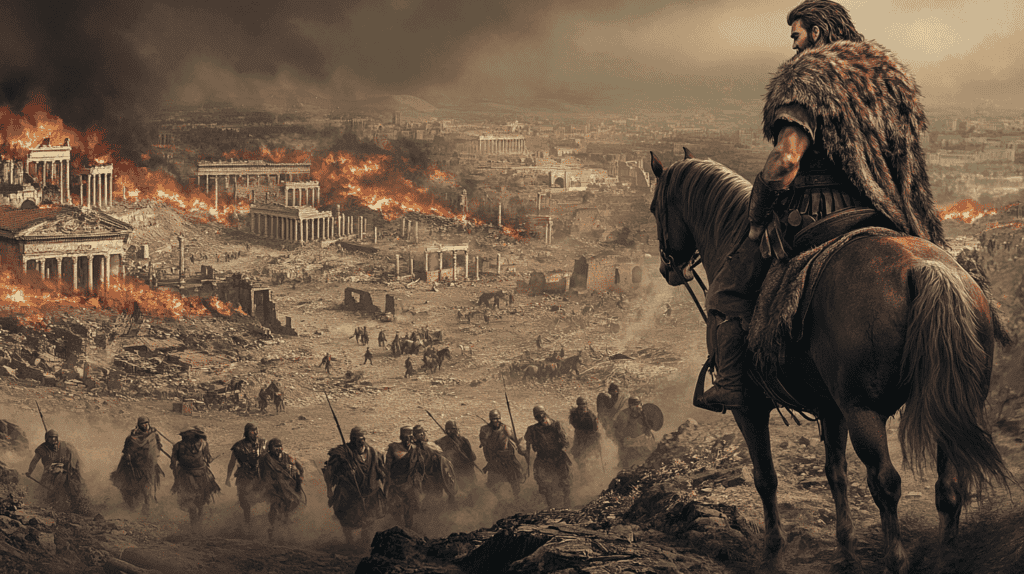
The Roman Response
Faced with this existential threat, the Western Roman Empire turned to its most capable military commander, Flavius Aetius. Known as “the last of the Romans,” Aetius was a skilled general and cunning politician who had spent years navigating the complex web of alliances and rivalries among the various barbarian tribes settled within Roman territory.
Recognizing the gravity of the Hunnic threat, Aetius embarked on a remarkable diplomatic effort to unite former enemies against Attila. His most significant achievement was securing the support of the Visigoths under King Theodoric I, who had long been at odds with Roman authority.
It was one of the first major battles in European history to feature large alliances on both sides, with dozens of different tribes and nations represented in the opposing armies. This aspect of the battle was noted by military historian Arthur Ferrill: “After he secured the Rhine, Attila moved into central Gaul and put Orleans under siege. Had he gained his objective, he would have been in a strong position to subdue the Visigoths in Aquitaine, but Aetius had put together a formidable coalition against the Hun. Working frenetically, the Roman leader had built a powerful alliance of Visigoths, Alans and Burgundians, uniting them with their traditional enemy, the Romans, for the defense of Gaul. Even though all parties to the protection of the Western Roman Empire had a common hatred of the Huns, it was still a remarkable achievement on Aëtius’ part to have drawn them into an effective military relationship.”
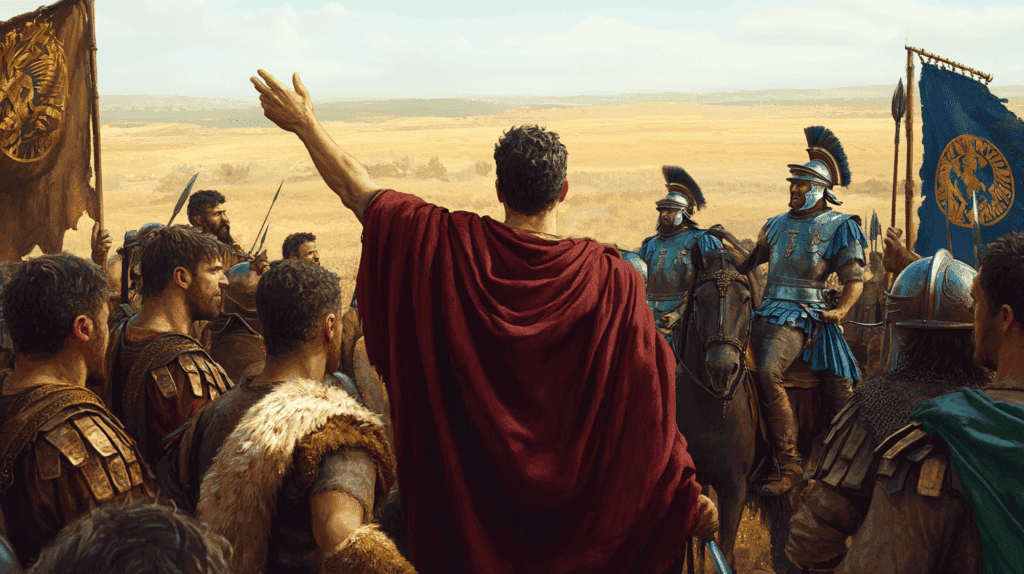
The Battle
The Armies Converge
In 451 CE, Attila led his vast army into Gaul (modern-day France), pillaging and destroying as they advanced. After being repulsed from the city of Orleans, the Hunnic forces found themselves confronted by the combined Roman-Germanic army under Aetius. The two armies met on June 20, 451 CE, somewhere in the Champagne region of France. While the exact location remains a subject of debate among historians, it is generally believed to have taken place between the city of Troyes and the town of Châlons-sur-Marne.
The battlefield chosen for this momentous clash was a vast plain, ideal for the cavalry-based tactics favored by both armies. A key feature of the terrain was a ridge that dominated the battlefield, which both sides recognized as a critical strategic position. Jordanes, a 6th-century historian, describes the scene: “The battlefield was a plain rising by a sharp slope to a ridge which both armies sought to gain; for advantage of position is a great help.”
The Clash of Titans
As the battle commenced around midday, both armies raced to secure the high ground. The Visigoths, fighting alongside the Romans, clashed with a detachment of Huns in a fierce struggle for control of the ridge. Despite suffering heavy casualties, the Visigoths eventually prevailed, giving Aetius a crucial tactical advantage.
With the high ground secured, the main battle lines engaged. The fighting was intense and chaotic, with warriors from dozens of different tribes and nations locked in mortal combat. Attila, true to his aggressive nature, focused his attack on the center of the Roman line, where the Alans (another allied tribe) were positioned. Initially, Attila’s gambit seemed to pay off. The Hunnic onslaught shattered the Alan formation, creating a dangerous gap in the Roman line. However, this success would prove short-lived.
The Tide Turns
As the Huns pushed deeper into the Roman center, they exposed their flanks to counterattack. Seizing this opportunity, the Visigoth heavy cavalry, led by King Theodoric and his son Thorismund, launched a devastating charge against the Hunnic forces.
The impact of this charge was decisive. The Hunnic army, caught between the Roman infantry and the Visigoth cavalry, began to falter. Despite Attila’s efforts to rally his troops, the momentum of the battle had shifted irrevocably in favor of the Roman coalition.
The Fall of a King
In the midst of the fighting, King Theodoric was struck down, killed either by a Hun’s spear or trampled in the chaos of battle. Rather than demoralizing the Visigoths, however, the death of their king only fueled their fury. Led by Prince Thorismund, the Visigoths redoubled their efforts, driving the Huns back with renewed vigor.
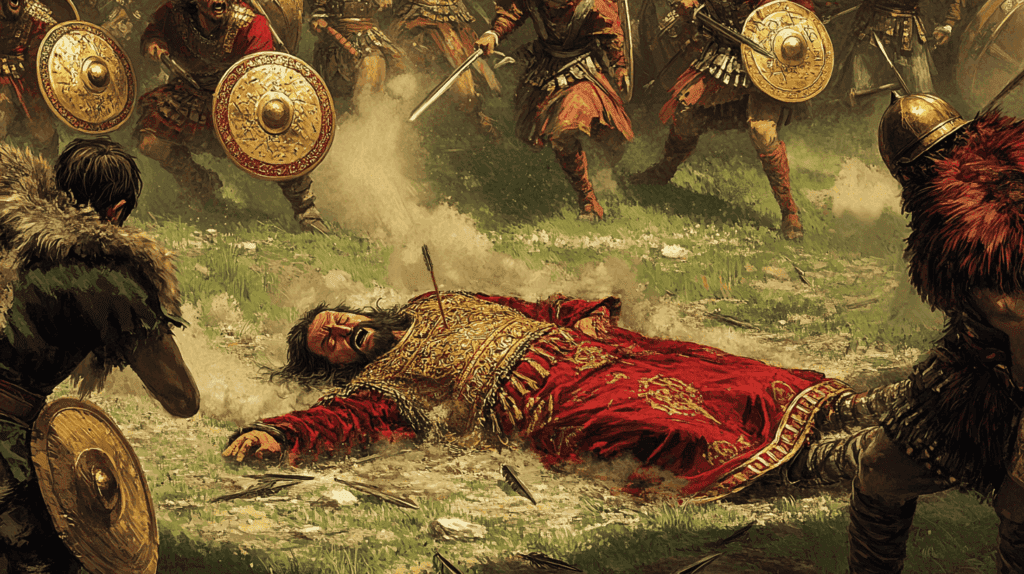
As night fell, Attila was forced to order a retreat. The Hunnic army withdrew to their fortified camp, using their famous wagon fort for protection. The Battle of Châlons had ended in a decisive victory for Aetius and his allies.
The Aftermath and Legacy
Immediate Consequences
In the immediate aftermath of the battle, both sides had suffered enormous casualties. The field was said to be littered with tens of thousands of bodies, a testament to the scale and ferocity of the fighting.
Attila, though defeated, was not destroyed. He managed to escape with a significant portion of his army intact, retreating across the Rhine. The following year, he would launch another invasion, this time targeting Italy. However, the aura of invincibility that had once surrounded the “Scourge of God” had been shattered.
For Aetius, the victory at Châlons represented the pinnacle of his career. He had succeeded where others had failed, halting the seemingly unstoppable Hunnic advance and preserving the Western Roman Empire, at least for a time.
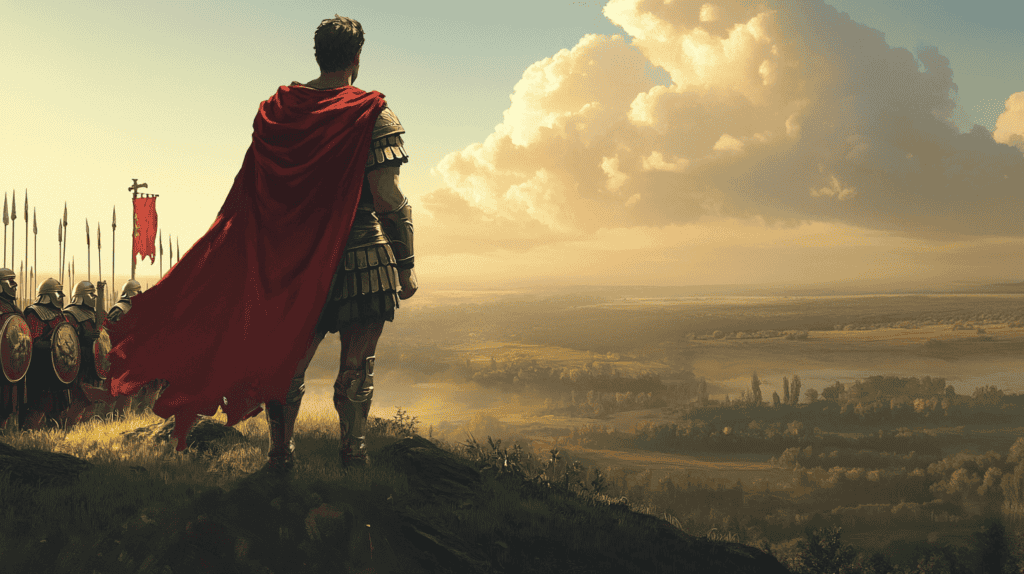
Long-Term Impact
The Battle of Châlons is often regarded as a turning point in European history. By defeating Attila, Aetius and his allies had preserved the cultural and political landscape of Western Europe from Hunnic domination.
Historian John Julius Norwich emphasized the battle’s significance: “It should never be forgotten that in the summer of 451 and again in 452, the whole fate of western civilization hung in the balance. Had the Hunnish army not been halted in these two successive campaigns, had its leader toppled Valentinian from his throne and set up his own capital at Ravenna or Rome, there is little doubt that both Gaul and Italy would have been reduced to spiritual and cultural deserts.”
The battle also marked a shift in the balance of power within Europe. The Visigoths, who had played a crucial role in the victory, emerged from Châlons with increased prestige and influence. In the coming decades, as Roman power continued to wane, the Visigoths would establish their own kingdom in southern Gaul and Spain.
The End of an Era
For Attila, Châlons marked the beginning of the end. Though he would launch one more major campaign against the Romans in 452, invading northern Italy, his power was clearly on the wane. In 453, just two years after his defeat at Châlons, Attila died suddenly on his wedding night. Without his leadership, the Hunnic Empire quickly disintegrated, torn apart by rivalries among his sons3.
Aetius, despite his triumph, would not long survive his great adversary. In 454, he was assassinated on the orders of Emperor Valentinian III, who feared the general’s growing power and influence. With Aetius gone, the Western Roman Empire lost its most capable defender. Just two decades later, in 476, the last Western Roman Emperor would be deposed, marking the traditional end of antiquity and the beginning of the medieval period.




